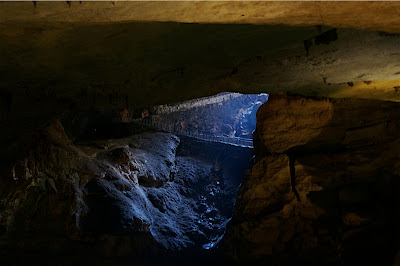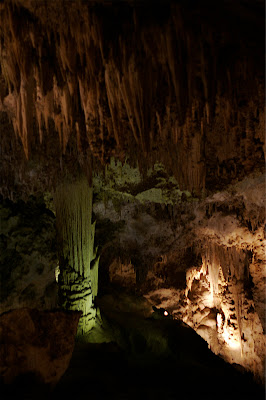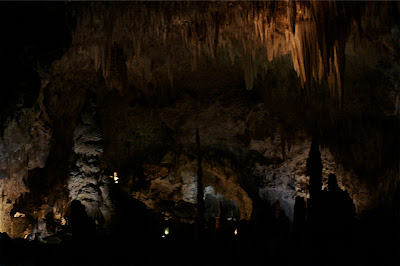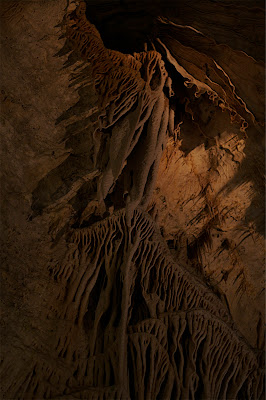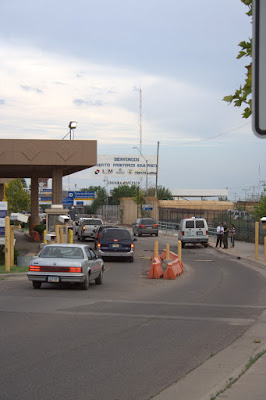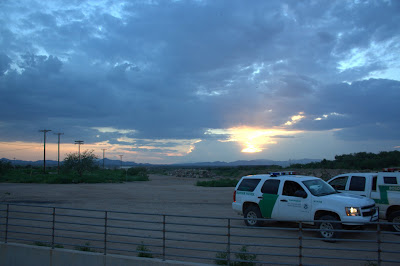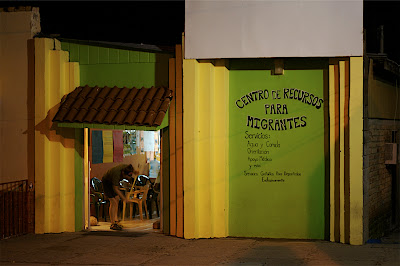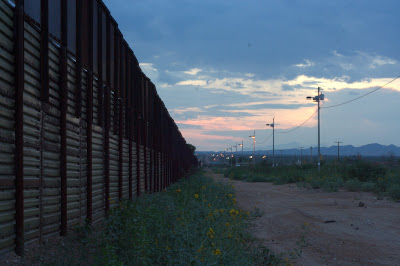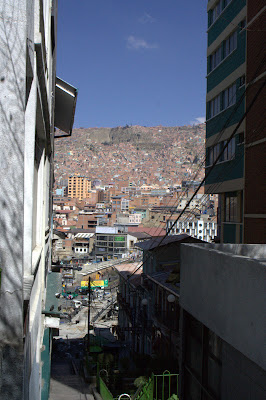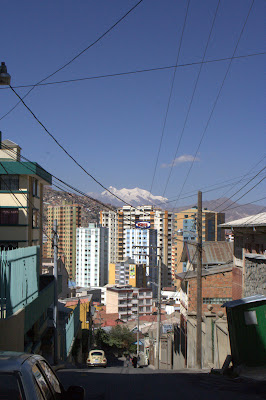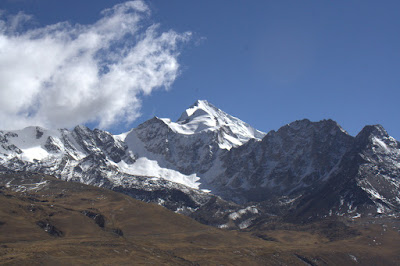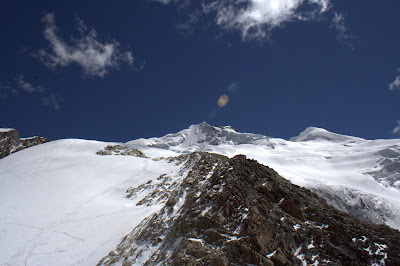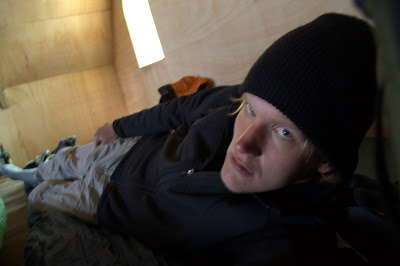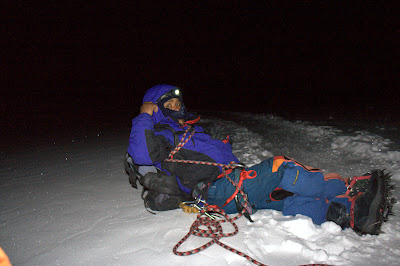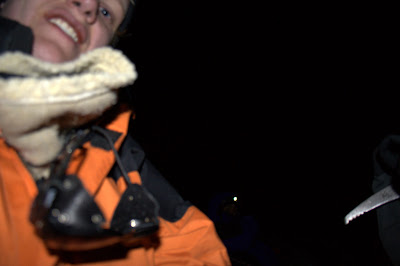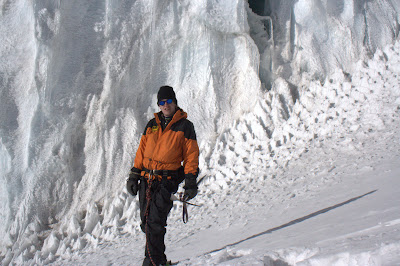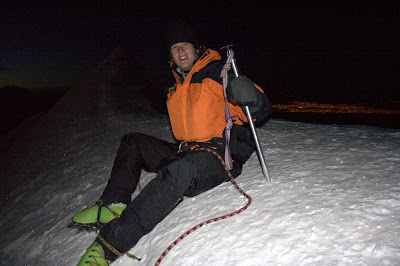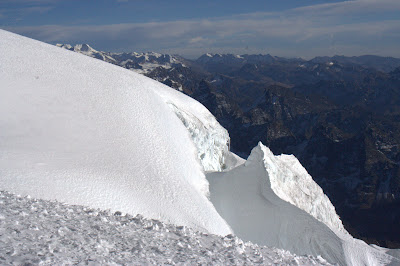I don't seem to have a photo, but when we started this hike in the morning there had been a large storm that deposited snow across the peak and left a crampon-defeating film of verglas on the rocks which prevented ascents that day (the first snow of the year). Luckily it had, more or less, melted off by the evening--leaving occasional patches of refrozen ice and a good amount of drinking water right in the boulderfield. It was a bit chilly that night, but our tent held up well in winds that destroyed some less fortunate poles.

looking to the east of longs from the boulderfield
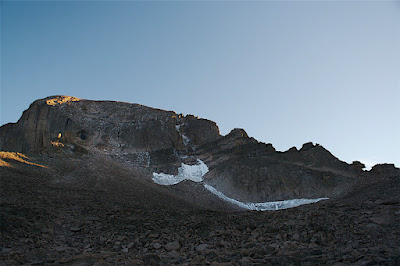
the peak itself--on the far right you can make out the keyhole

I've decided a headlamp isn't worth anything if it can't throw the majestic red light--boiling water for tea and sleeping the
The first waypoint on summit day was pulling ourselves out of our wind battered tent into what we were told were 80mph winds--much worse than usual. Luckily we had balaclavas and hard shells to break the wind, but it would've been better to just have brought proper winter layers--such are the rockies. The first waypoint of the 'climb' was the keyhole, after which the class III route is named--we made our way up there after breakfast around 8 or 830.

Looking across the backside of the keyhole. Due to the structure of the rock, the winds here were quite violent. Only on the way back had they calmed enough such that I wasn't getting blown over and could pull my camera out for this picture.
Many people turned around here, because they just simply weren't prepared for the wind. Without a wind parka it would've been disconcertingly cold, and the nature of Longs is that many people go up unprepared. We pushed on into the wind, happy to have be with a smaller-than-usual number of people on the peak with us.
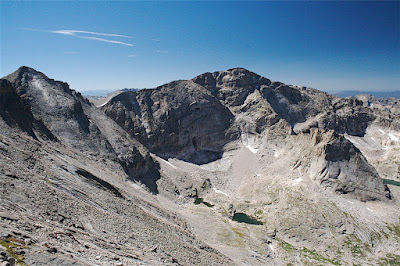
a view from behind the keyhole

another
The route continues through two long traverses and corresponding climbs that link one to the next and then the peak. They were a lot of fun, though very exposed with high winds. Definitely at the high of class III routes. I suppose that since this isn't so much intended to be a route description I won't get into too much detail--good ones exist on the internet and should be read instead if you have plans to attempt it. But, we took some great pictures...
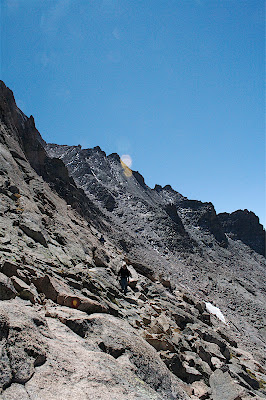
across the narrows toward the trough
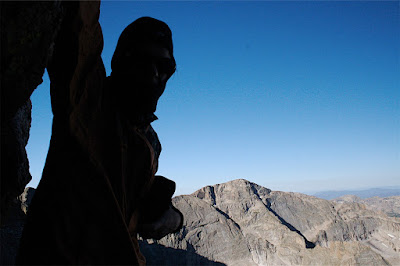
exposed, but there were usually handholds when the route cornered and caught the heaviest winds
The homestretch, which is the final vertical part before the peak, runs up a smooth rock face with a crack in it. It was still pretty iced over in places. We took our time to move carefully up the crack and then finally topped out!

on the summit

looking north across the park

looking off the summit to the boulderfield, if you squint you might see a white pixel that is our tent

sitting together above the diamond on the east fast of Longs
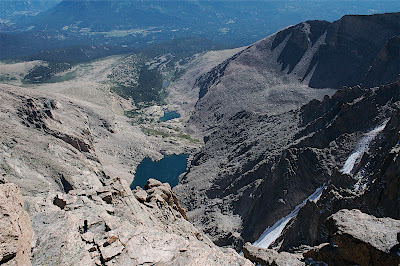
looking to the east down over the diamond onto chasm lake
This is a great peak. We made a good elevation gain (I think 6 or 7 thousand feet), which was really felt--even though Longs isn't as tall as most Bolivian peaks, I had become lost my acclimization in lower elevations since returning. It was a hard climb toward the end, but a great hike to share with Emily and a fine end to an amazing summer.
Somewhat sad not to have much more to post here for awhile. Plans are in the works for round two of travels--this time for an entire year after graduation. I also have a few short trips to various national parks lined up for during breaks from university that I'll write about here. Hopefully this isn't too melancholy of a hiatus.
